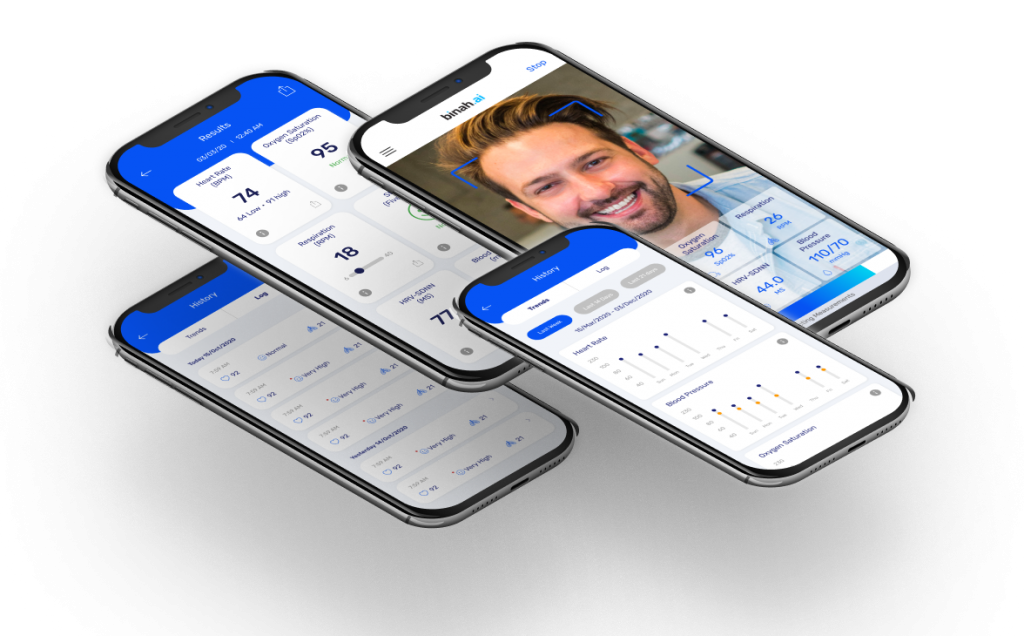SDG Group, has announced the launch of an app (Docdot) that will help healthcare professionals address the challenge of finding and monitoring potentially positive individuals, while limiting the risk of exposure of health professionals and other individuals.
Docdot is an AI-assisted mobile app that allows doctors to remotely monitor a patient’s vital signs with medical grade accuracy. A patient just needs to look into their smart phone camera and answer a few questions. The results, which take as little as 45 seconds to retrieve, can be used to diagnose, monitor and ultimately prevent the spread of COVID-19 with a geo-referenced telemonitoring and televisit solution. A modified version aimed at organisations supporting employees to safely return to work will be available soon.
Quicker, more accurate and comprehensive than alternatives, Docdot is the first remote monitoring and triage tool with the potential to transform the diagnosis, management and treatment of those with suspected COVID-19, while helping to slow its spread.
Designed and developed by a team of world-class telemedicine and data scientists, Docdot uses a unique combination of light signal processing and AI technologies to convert light reflected from blood vessels in your face into highly accurate real time vital sign measurements, including:
- Heart rate (BPM)
- Oxygen saturation (Sp02)
- Respiration (rpm)
- Heart Rate Variability (HRV)
- Stress (Baesky’s and US/European Index)
Heather Beardmore, CEO, SDG Group UK, comments: “Under the current system, diagnosing, monitoring and managing COVID-19 is contributing to its spread through contact. At present, individuals quarantined with suspected COVID-19 can record just one of the vital signs required to indicate the presence and progress of the virus, which is body temperature. The others – respiration, oxygen saturation, heart rate and HRV – are usually recorded by health professionals, potentially in densely populated locations and in close proximity to the patient. This puts primary care, community care and hospital workflows under immense pressure, places health workers and patients at an elevated risk and contributes to the spread of the virus.”
Beardmore continues: “Docdot gives health workers the information they need to triage patients at a safe distance or in quarantine, preventing unnecessary visits to GP surgeries, triage stations and hospitals, and reducing the risk of exposure among health workers and vulnerable patients. This maximises the availability of healthcare resources for those who need them most, and contributes to slowing the spread of the virus.”
Docdot uses light signal processing technology, or remote photoplethysmography (rPPG) invented and built by SDG’s technology partner Binah.ai, a technique that enables a smart phone camera to record the light reflected by the blood vessels flowing beneath your skin. The blood volume in this micro vascular tissue varies in response to changes in respiration, blood pressure and other vital processes, allowing these variations to be converted, using proven parameters, into vital sign measurements. Independent clinical trials show over 90% of measurements to be as accurate as hospital grade monitors.
The data retrieved by Docdot is geo-referenced and collected in real-time via cloud architecture, which also enables the application of statistical-epidemiological modelling, useful for resource allocation planning and contagion forecasting.
The rPPG binah.ai technology powering Docdot has been extensively tested both internally at dedicated laboratories and in independent clinical trials at Indira Gandhi General Hospital in India (2019) and currently at an FDA/Canada Health approved facility (2020). Research and testing continues with a sustained focus on achieving even higher levels of accuracy.

